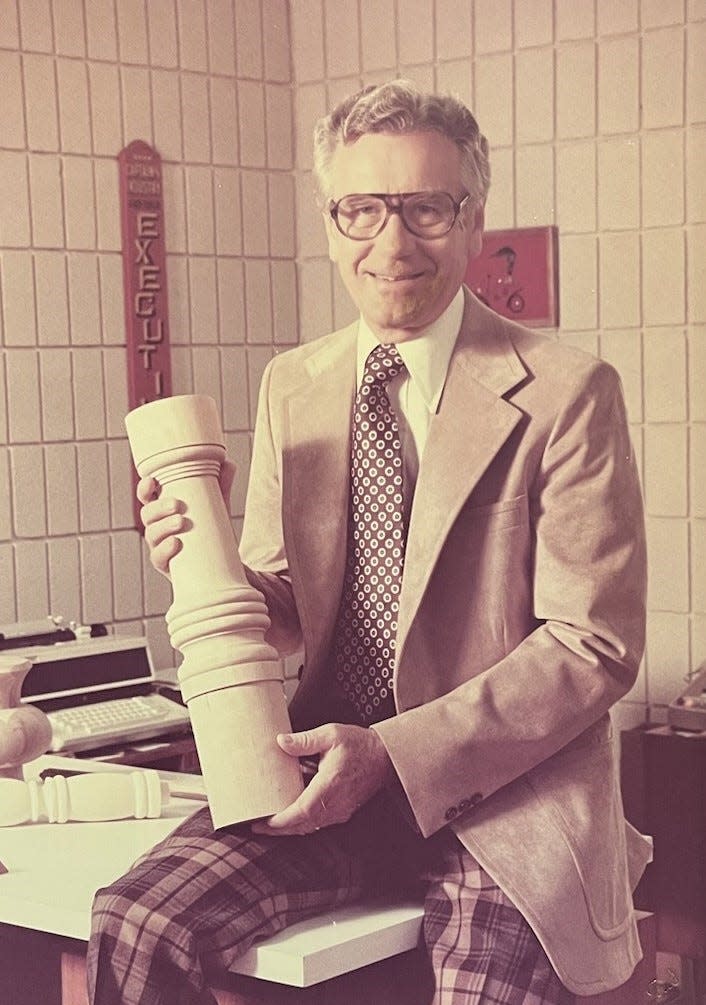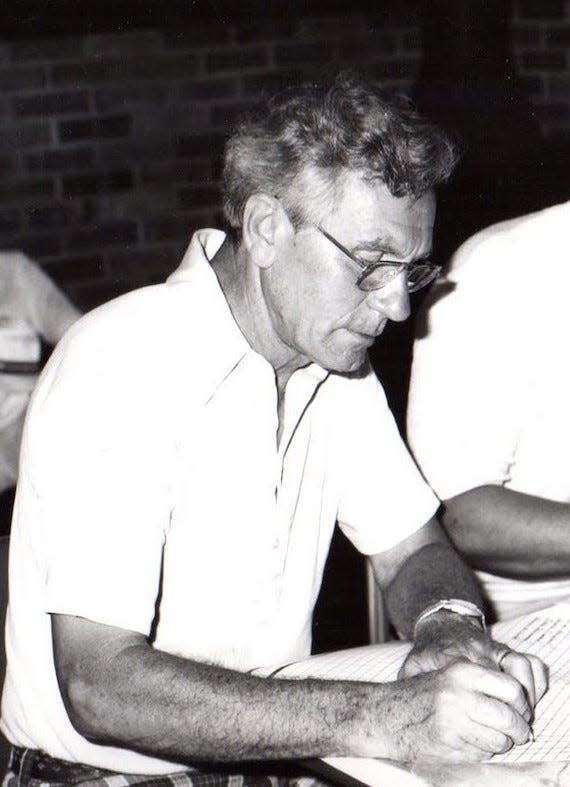Steve VanderVeen: The story of Zeeland Architectural Components

Melvin Boonstra liked to sell. And, like the machines he later employed, his business life had many turns.
He was born in 1916 to a first-generation Dutch immigrant who owned a sauerkraut factory in Munster, Indiana. That same year, in Zeeland, William Eding founded Zeeland Wood Turning Works (ZWTW), a company that shaped wood for table and chair legs, spindles, and decorative furniture by rotating it against sharp tools.
Eding’s contemporaries included Michigan Star Furniture (later Herman Miller), Colonial Clock Company, and Zeeland Ornamental Company (later Royal Casket Company). In Grand Rapids, his customers may have included Berkey and Gay, Sligh, Stickley, and Widdicomb-Mueller.
But it wasn’t the furniture industry that brought Melvin to Zeeland. Back in Munster, in 1939, Melvin got married and, to support his family, opened a small poultry and egg store. Soon he had two stores and, to keep growing his business, Melvin decided to sell poultry wholesale.
His businesses then brought him to the chicken hatchery capital of the world: Zeeland. When he got there, he decided he liked the town and wondered if he could have his relatives run his stores in Indiana. His plan was to drive a load of chickens to Indiana on Friday night and help sell, dress, and package the birds on Saturday for his customers’ Sunday meals. But things didn’t work out that way.
In 1947, he sold his poultry and egg businesses in Munster and moved his family to Zeeland. There, he bought Home Fuel and Supply, a coal-distributing business, located near the corner of Elm Street and Washington Street, where DeBruyn Seed is today.
When he foresaw that natural gas would replace coal as a source of home heating fuel, he sold his coal business, and, in 1950, bought Gerrit Van Tamelen’s share in the Trend Clock Company. There, as head of sales, he called on furniture stores and hired a designer. One of Trend Clock’s suppliers was ZWTW.
Affable and astute, Melvin won election to Zeeland City Council and in 1954 became president of the Zeeland Chamber of Commerce. But the desire to own his own business never left him.

Melvin got another chance due to tragedy. Both Bill Eding, owner of ZWTW, and Jim Hawthorne, operating manager, died in separate vehicle accidents. As a result, ZWTW lost 80% of its customers. In 1962, with the help of his banker and silent investors, Melvin bought ZWTW.
By the time he was again elected president of the Zeeland Chamber of Commerce in 1964, ZWTW had regained its lost business.
ZWTW has always been a family affair. In 1954, Jay Schutte joined ZWTW. His son, Roger, joined the firm in 1963 and his grandson, Stephen, joined in 1984. In 2006, Roger hand-turned molds, his father set up the “cutter head,” and his son did the wood-turning and delivered the finished product. Then, in 2008, Stephen’s son, Dalton, joined ZWTW.
Meanwhile, Melvin had stayed busy. One of his joys was engaging in business fund drives for Calvin College. He loved doing them so much, he also raised money for Hope College.
Melvin’s son, Keith, joined him at ZWTW in 1962, rejoined him in 1972, and by 1985 had purchased the business. Gradually, Keith steered the business toward architectural millwork. “The odd thing,” says Keith, “is that we didn’t see the demise of the furniture industry but wanted to do more with the expertise we had.”
ZWTW’s big break came in 1989, when it received an order to mill wood for the Michigan State Capitol.

Then someone said, "If you're doing architectural component work, why call yourself ZWTW?” From then on, ZWTW did business as Zeeland Architectural Components.
Subscribe: Get unlimited access to our local coverage
By 2006, 75% of ZAC’s business was customized architectural millwork. In addition to milling for the Michigan State Capitol, ZAC has milled wood for Holland City Hall, the Zeeland Library, Holland Hospital, the Virginia State Capitol, Gerald R. Ford International Airport, the U.S. Capitol, Little Caesars Arena, and Michigan Central Station (Corktown) — plus various casinos and churches and the University of Notre Dame.
Today, 85% of ZAC’s business is customized architectural millwork.
For several years, Melvin rode one of his collector cars in Zeeland parades. He died in 2016.
Information for this story comes from conversations with Keith Boonstra in 2008 and 2023 and “Trend Clocks and Sligh Clocks.”
— Steve VanderVeen is a resident of Holland. His book, "The Holland Area's First Entrepreneurs," is coming soon. You may reach him at skvveen@gmail.com.
This article originally appeared on The Holland Sentinel: Holland History: The story of Zeeland Architectural Components
